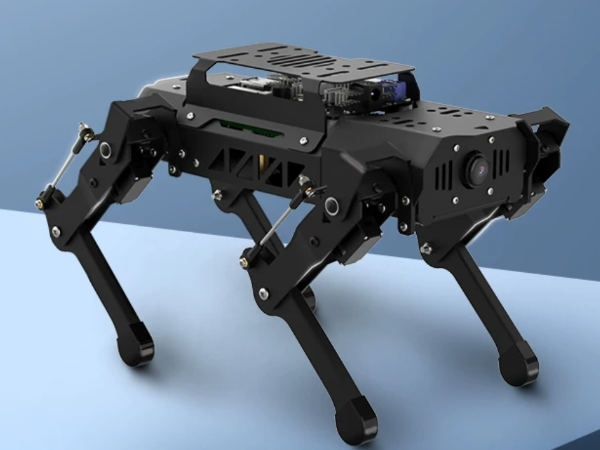This project commenced development in 2022 and is set to incorporate AI modules in future iterations, aiming to enhance its intelligence and adaptability. The quadruped robot, developed on the Raspberry Pi 5 platform, features a robust aluminum alloy body structure and is powered by eight high-performance hollow cup servos. Its legs adopt a linkage design, enabling a range of basic locomotion capabilities, such as free walking and navigating steps with ease.
The robot achieves multiple gaits, including Walk, Amble, and Trot, through precise adjustments of ground contact time, lift-off time, lift-off height, and cycle interval between the front and rear legs. This flexibility in gait control allows the robot to adapt to various terrains and tasks effectively.
Standout Feature
A standout feature of PuppyPi is its built-in IMU sensor, which provides real-time monitoring of the robot’s posture. This capability ensures continuous adjustments to its leg joints, allowing the robot to maintain balance even on uneven surfaces or during complex maneuvers.
In terms of functionality, the quadruped robot has achieved advanced capabilities such as free climbing, obstacle avoidance using distance measurement, SLAM-based mapping, and navigation (aided by an integrated LiDAR module), and advanced features like radar-enabled sentry mode and radar-based tracking. These functionalities make it versatile and suitable for applications ranging from exploration and surveillance to educational and research purposes.
With plans to integrate AI modules in the future, this quadruped robot is poised to become a more intelligent and autonomous system capable of handling even more complex tasks, such as real-time decision-making, object recognition, and adaptive path planning. Its modular design and scalable architecture ensure it remains a competitive and innovative platform in the field of robotics.
